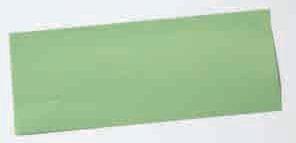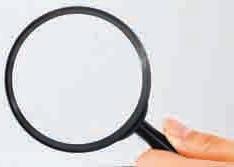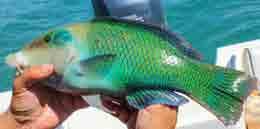
4 minute read
Collections matter! Museum collections in a changing world

ANCIENT TIMES
Les Bursill OAM is a Dharawal (Aboriginal Australian) historian, archaeologist, anthropologist and author. He was interviewed by Catherine (Cat) Beehag, Manager of Science Communication and the Australian Museum Science Festival.
CAT: You’ve discovered over 300 archaeological sites in the Sutherland Shire in Sydney. What is your favourite site and why?
LES: I guess the discovery of the Wagilag Sisters Dreaming is my favourite engraving site, followed by the Hooked Boomer and Kangaroo Dreaming. I also truly love the Red Fish cave site with its Fish Dreaming and the child’s hand stencils. I like them because these sites are part of my dream line. I am Dharawal, as were all my forebears. These sites are my people’s history.
CAT: Where did you study hunter-gatherer and Dharawal culture and language?
LES: I only work on Dharawal sites in southern Sydney. I did a degree majoring in Prehistory at the University of New England. My second major was Ancient History. Then I completed a Masters degree on Dharawal living sites – it was original research.
CAT: You have had many careers in your life so what advice would you give to a young student just leaving school?
LES: Set up a good portable superannuation scheme, keep up to date with technology, and don’t let yourself become too narrow in any one field. Don’t ever work at a job you don’t enjoy. Don’t sit around – get out and find an active hobby that you can turn into a career if the need arises.
Photo courtesy Les Bursill.


THIS EDITION OF XPLORER COMPILED BY DEREK WALKER, CHARLOTTE GALLEGUILLOS, SHENALI BOANGE & TIM MALL
Murray Cod
Australia’s largest freshwater fish, the Murray Cod, Maccullochella peelii, is known as ponde or mewuruk to Aboriginal peoples. It lives in the Murray-Darling River system where it preys on fishes, molluscs, turtles and other animals. The largest specimen recorded was 1.8 metres long and weighed over 110 kilograms, but they are usually less than 70 centimetres and under 10 kilograms. Its deep body is patterned olive, grey and green above with a creamy white belly. It has a large mouth, small eyes and curved head shape. Once common, the Murray Cod is now threatened because of overfishing and environmental changes to our rivers.

Photo by Mark McGrouther

FUN FACT Aboriginal people used the bark of the paperbark tree, Melaleuca, to cook fish and keep it moist. They would prepare and soften the bark by soaking it in water for 2 or 3 days, then wrap the fish in the wet paperbark, place it in a ground oven and cover it with earth. When the paperbark was dry, the fish was ready for eating.
BUSH CALENDAR
For Aboriginal people, the Sydney Golden Wattle, Acacia longifolia, was both a bush calendar and a fishing aid. It is said that when the wattle blooms (June to October), it’s time to go fishing for mullet. The fisher would drop flowers onto the water surface and the fish would swim up and eat them. The flowers would bloat the fish, causing them to float so they could be readily scooped up.
Photo © Royal Photo © Royal Botanic Gardens Botanic Gardens & Domain Trust. & Domain Trust.
Send your query to the Search & Discover team, email sand@austmus.gov.au
search DISCOVER

Left
Juvenile female Thicklip Wrasse. Photo © Andy Lewis.
Right
Adult male Thicklip Wrasse. Photo © Mick Richters.
FREQUENTLY WE ARE ASKED TO IDENTIFY ANIMALS FROM PHOTOGRAPHS; HOWEVER, THIS CAN GET TRICKY WHEN THE ANIMAL’S APPEARANCE CHANGES OVER ITS LIFETIME. TAKE FISHES FOR EXAMPLE.
Search & Discover is the Museum’s hands-on mini-museum packed with real specimens and resources, from computers and microscopes to books and magazines. Bring in your questions or email them to us at sand@austmus.gov.au.
There are many fish species where the juvenile stage looks very different to the adult stage, causing some confusion among the fishers and divers who come into contact with them.
THICKLIPS
A keen fisherman, Mick Richters of Gladstone (Qld), sent us this stunning photo of a fish (above right) for identification. The fish is vivid green in colour and each scale is highlighted with a dark green edge. It also has thick lips – a vital clue which, with the location (Hummocky Island, Queensland), suggested to Fish Collection Manager Mark McGrouther that it was none other than the Thicklip Wrasse, Hemigymnus melapterus. ‘The adult male is a pretty distinctive-looking fish’, Mark said. ‘What might surprise people, however, is that the fish adopts a number of different guises as it grows. Juveniles are light-coloured on the front half, dark at the back and have yellow tails. Very young specimens look different again, having a greenish black body with dark bars and a white band around the middle.’
HALF-AND-HALF
‘Unfortunately, many fish identification guides use images of the juveniles which are known as the half-and-half wrasse. Not only are they a different colour, they lack the obvious thick lip’, Mark said. ‘The male’s final colour change is associated with sexual maturity. It’s not clear why the juvenile “wears” its half-and-half colouration. ‘The colour changes with growth shown by the Thicklip Wrasse (indeed, by many species of wrasse) increase the challenges for underwater photographers who try to take representative photos of the species!’
DAVID BOCK, COORDINATOR, SEARCH & DISCOVER
WEBLINK
Explore the wrasse family, Labridae, online at australianmuseum.net.au/Labridae-Wrasses-list








